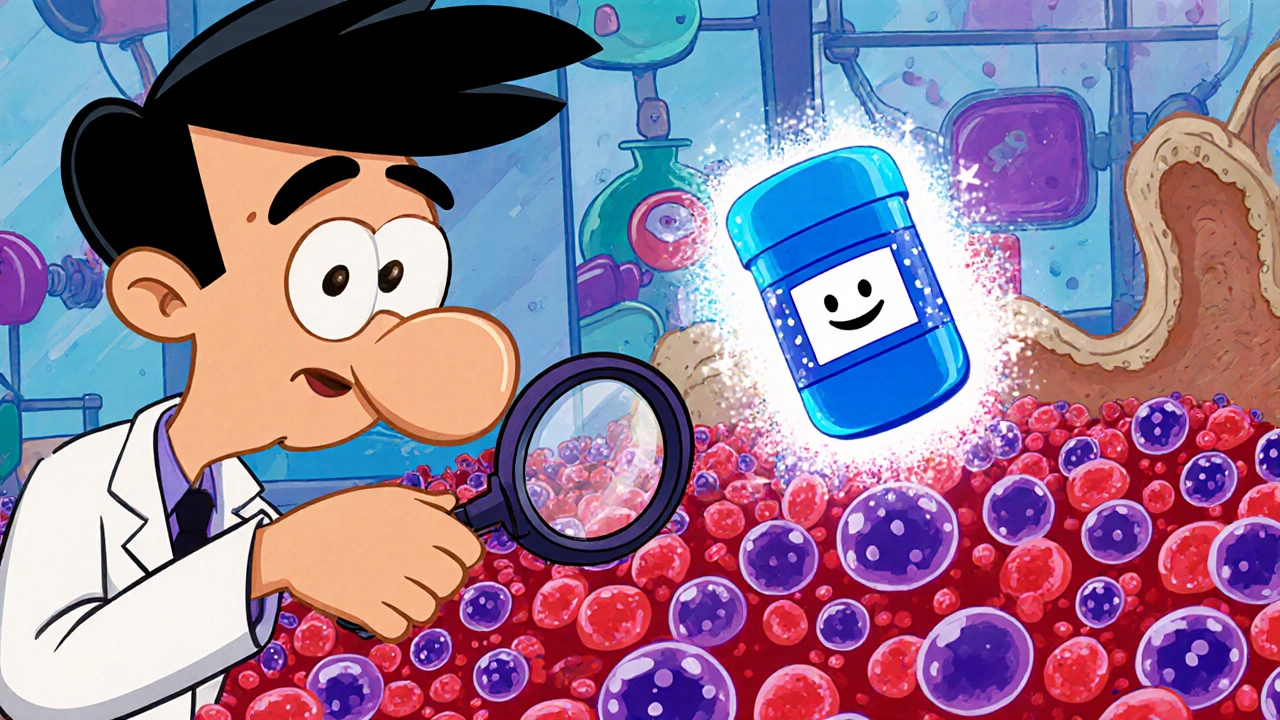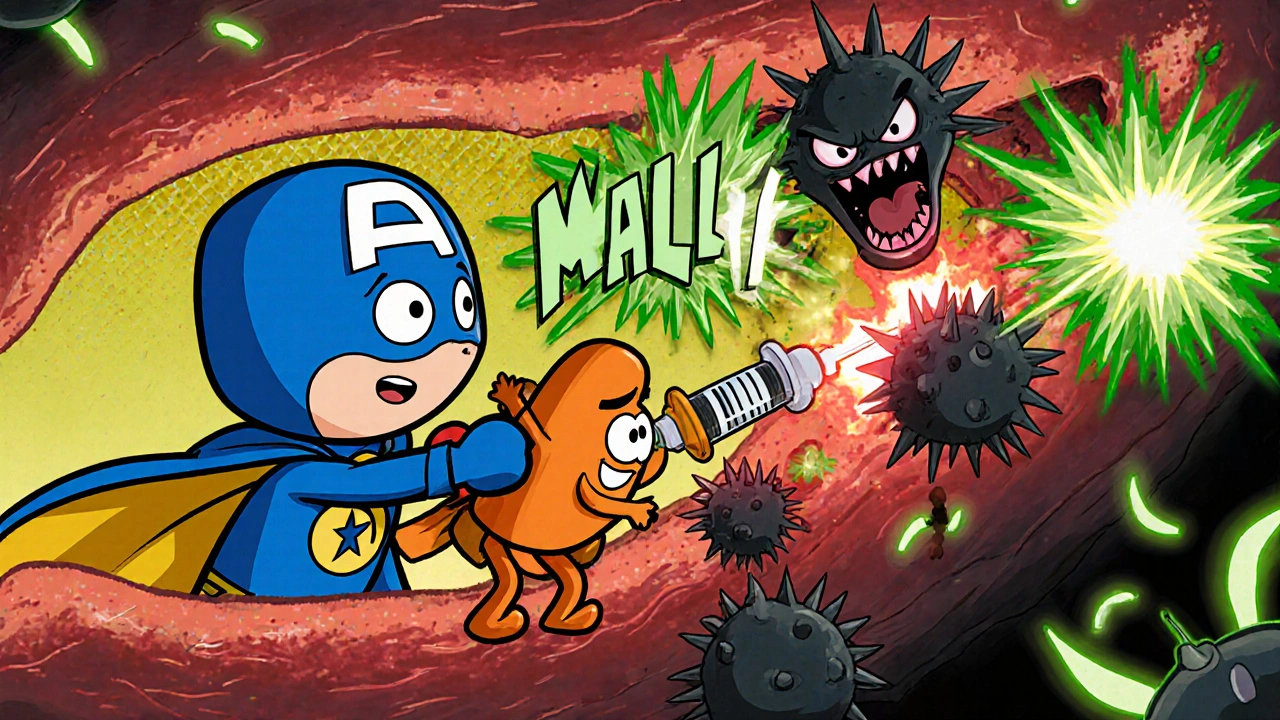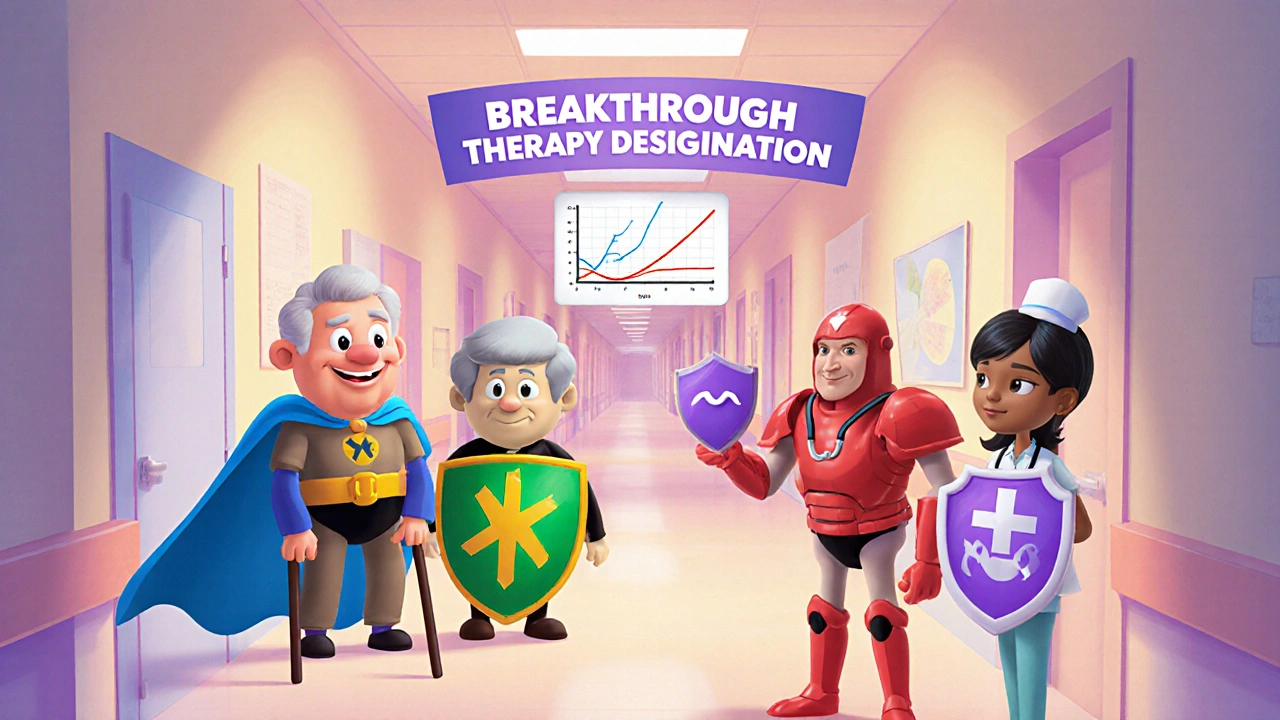Pomalidomide’s Role in Treating Relapsed and Refractory Acute Myeloid Leukemia
 Oct, 16 2025
Oct, 16 2025
Pomalidomide Response Estimator
Treatment Response Estimator
Estimate response rates and survival outcomes for relapsed/refractory AML patients based on treatment regimen and patient characteristics.
Estimated Response Rate
Based on clinical trial data for relapsed/refractory AML patients
Estimated Survival
Median overall survival (months)
Key Considerations:
- Patients with TP53 mutations or complex karyotype show higher response rates (up to 30%)
- Myelosuppression is common (neutropenia in 45%, thrombocytopenia in 38%)
- Thromboembolic risk is elevated (≈5% occurrence)
- Weekly blood counts recommended during first two cycles
When acute myeloid leukemia (AML) comes back after initial therapy or refuses to respond, doctors scramble for options that can still push the disease back. One drug that’s gaining traction in this hard‑to‑treat space is pomalidomide. Below we unpack what pomalidomide does, where the data come from, and how it fits into today’s treatment algorithms.
Key Takeaways
- Pomalidomide is an immunomodulatory drug (IMiD) that works by degrading the protein cereblon, affecting leukemic cell survival.
- PhaseII trials show modest response rates (15‑25%) in relapsed/refractory AML, especially when combined with hypomethylating agents.
- Safety profile includes myelosuppression and thromboembolic risk; vigilant monitoring is essential.
- Patients with TP53‑mutated or complex‑karyotype AML may derive the most benefit.
- Ongoing studies are testing pomalidomide with venetoclax, FLT3 inhibitors, and checkpoint blockers.
Understanding the Disease Landscape
Acute Myeloid Leukemia is a clonal disorder of myeloid progenitors that rapidly expands in the bone marrow, crowding out normal blood formation. When the disease returns after remission (relapsed AML) or never achieves a durable response to first‑line therapy (refractory AML), survival drops below six months on average. Conventional salvage regimens-high‑dose cytarabine, anthracycline‑based combos, or hypomethylating agents like azacitidine-offer limited durability.
What Is Pomalidomide?
Pomalidomide is a third‑generation immunomodulatory drug (IMiD) originally approved for multiple myeloma. It belongs to the same family as thalidomide and lenalidomide but carries a stronger affinity for the cellular protein cereblon, which is part of an E3 ubiquitin ligase complex.
Binding to cereblon triggers ubiquitination and proteasomal degradation of transcription factors Ikaros (IKZF1) and Aiolos (IKZF3). In AML cells, this cascade disrupts survival pathways, enhances apoptosis, and restores immune surveillance by boosting natural killer (NK) cell activity.
Mechanistic Edge Over Other IMiDs
Compared with lenalidomide, pomalidomide achieves a two‑to‑three‑fold higher cereblon binding constant (Kd ≈10nM vs30nM). This translates into stronger down‑regulation of IKZF1/3 and more pronounced anti‑leukemic effects in pre‑clinical models. Additionally, pomalidomide’s shorter half‑life (≈9hours) allows more flexible dosing in combination regimens.

Clinical Evidence in Relapsed/Refractory AML
Several phaseII studies have explored pomalidomide as a single agent or in combination. The most cited trial (NCT02540153) enrolled 58 patients with relapsed or refractory AML, administering pomalidomide 4mg daily for 21days of a 28‑day cycle.
- Overall response rate (ORR) was 22% (complete remission+partial remission).
- Median overall survival (OS) extended to 7.9months versus 4.3months in historical controls.
- Patients harboring TP53 mutations or complex karyotype showed a higher ORR (30%) than the broader cohort.
When paired with azacitidine (75mg/m² subcutaneously for 7days), the ORR climbed to 35% and median OS reached 9.6months in a separate 2023 study (NCT04191313). The synergy appears to stem from azacitidine’s demethylating effect, which re‑activates tumor suppressor genes, while pomalidomide amplifies immune‑mediated clearance.
How Pomalidomide Fits Into Current Treatment Algorithms
Guidelines from the European LeukemiaNet (ELN) and the NCCN now list pomalidomide‑based regimens as ClassIIa options for patients who are unsuitable for intensive chemotherapy and have failed at least one hypomethylating agent.
Typical decision flow:
- Assess performance status (ECOG≤2) and organ function.
- Confirm relapsed/refractory status after at least one prior line.
- Screen for TP53, FLT3‑ITD, and complex cytogenetics-mutations guide combination choice.
- Start pomalidomide monotherapy (4mg daily) if patient cannot tolerate azacitidine.
- Escalate to pomalidomide+azacitidine if marrow reserve permits.
- Consider adding venetoclax or a FLT3 inhibitor in molecularly defined subsets (ongoing trials).
Safety Profile and Monitoring
Myelosuppression is the most common adverse event, manifesting as neutropenia (grade≥3 in 45% of patients) and thrombocytopenia (grade≥3 in 38%). Prophylactic growth factor support (filgrastim) is recommended for cycles with anticipated neutropenia.
Thromboembolic events (deep‑vein thrombosis or pulmonary embolism) occur in ≈5% of patients, especially when combined with azacitidine. Low‑dose aspirin or therapeutic anticoagulation should be considered based on individual risk.
Other notable toxicities include fatigue, rash, and mild hepatic enzyme elevation. Routine labs (CBC, CMP) every week for the first two cycles, then every 2weeks, help catch trends early.
Practical Dosing and Administration
- Standard dose: 4mg oral tablet once daily on days1‑21 of a 28‑day cycle.
- Start at 2mg for patients >75years or with baseline renal impairment (creatinine clearance<30mL/min).
- Reduce to 2mg or hold treatment if grade≥3 neutropenia persists beyond 7days despite growth factor support.
Drug-drug interactions are minimal, but strong CYP3A4 inducers (e.g., rifampin) can lower pomalidomide exposure.

Future Directions and Ongoing Trials
Multiple phaseI/II studies are layering pomalidomide with newer agents:
- Venetoclax (BCL‑2 inhibitor): early data suggest ORR≈45% in TP53‑mutated AML.
- Gilteritinib (FLT3 inhibitor) for FLT3‑ITD positive disease.
- Checkpoint inhibitors (pembrolizumab) to tap into the immune‑activating properties of pomalidomide.
Regulatory bodies are watching these combos closely, with the FDA granting Breakthrough Therapy Designation for pomalidomide+azacitidine in 2024.
Patient Selection - Who Benefits Most?
Retrospective analyses highlight two subgroups that consistently outperform the broader cohort:
- TP53‑mutated AML: despite historically poor prognosis, these patients exhibit higher response rates, possibly because pomalidomide destabilizes mutant transcriptional complexes.
- Complex‑karyotype AML (≥3 chromosomal abnormalities): the drug’s immunomodulatory boost appears to overcome the genomic chaos.
Conversely, patients with isolated NPM1 mutations without additional high‑risk features tend to respond better to standard hypomethylating agents alone.
Bottom Line
Pomalidomide isn’t a magic bullet, but it adds a valuable tool to the limited salvage armamentarium for relapsed and refractory AML. Its ability to harness the immune system, combined with a manageable safety profile, makes it especially attractive for older or frail patients who can’t tolerate intensive chemotherapy. As more combination data roll in, pomalidomide could become a cornerstone of “chemo‑free” strategies, particularly for high‑risk genetic subtypes.
Frequently Asked Questions
What makes pomalidomide different from lenalidomide in AML?
Pomalidomide binds cereblon with higher affinity, leading to more potent degradation of IKZF1/3 and stronger anti‑leukemic activity. Clinically this translates into higher response rates, especially when combined with hypomethylating agents.
Can pomalidomide be used as a first‑line treatment for AML?
No. Current guidelines reserve pomalidomide for relapsed or refractory disease after at least one prior therapy. Ongoing trials are investigating earlier use, but it isn’t approved for frontline AML yet.
What are the most common side effects to watch for?
The biggest concerns are neutropenia, thrombocytopenia, and a modest risk of blood clots. Regular blood counts and prophylactic anticoagulation in high‑risk patients help manage these issues.
Is there a specific genetic profile that predicts better response?
Yes. Patients with TP53 mutations or complex karyotype AML have shown higher response rates in trials. Testing for these biomarkers before starting therapy is advised.
How is pomalidomide administered with azacitidine?
Azacitidine is given subcutaneously at 75mg/m² on days1‑7 of a 28‑day cycle, while pomalidomide is taken orally on days1‑21. Dose adjustments are made based on blood count recovery.
| Regimen | Overall Response Rate | Median OS (months) | Major Toxicities |
|---|---|---|---|
| Pomalidomide+Azacitidine | 35% | 9.6 | Neutropenia, thrombosis |
| Pomalidomide monotherapy | 22% | 7.9 | Myelosuppression |
| High‑dose Cytarabine | 28% | 6.2 | Myelosuppression, neurotoxicity |
| Azacitidine alone | 18% | 5.8 | Gastrointestinal, mild cytopenias |
Rafael Lopez
October 16, 2025 AT 18:49When considering pomalidomide for relapsed or refractory AML, it’s essential to first map out the patient's cytogenetic profile, especially noting TP53 mutations or complex karyotype, because these biomarkers have repeatedly shown a higher response rate; additionally, assessing performance status (ECOG ≤2) ensures the patient can tolerate the regimen, which often involves a 21‑day dosing schedule within a 28‑day cycle, and this baseline assessment should be documented meticulously, as omissions can compromise downstream monitoring; the drug’s mechanism-cereblon binding leading to IKZF1/3 degradation-means that synergistic partners like azacitidine are not merely additive but may re‑activate silenced tumor suppressor genes, thereby amplifying immune‑mediated clearance, a point underscored by several phase II trials that reported median overall survivals approaching ten months when the combination is employed; clinicians must also be vigilant for myelosuppression, which manifests as neutropenia in nearly half of patients, necessitating prophylactic G‑CSF support, and thrombocytopenia, which may require dose adjustments or transfusional support, both of which should be tracked with weekly CBCs for the first two cycles and bi‑weekly thereafter; beyond the hematologic toxicities, the risk of thromboembolic events-particularly when pomalidomide is paired with hypomethylating agents-demands that patients be evaluated for baseline clotting risk and possibly placed on low‑dose aspirin or therapeutic anticoagulation; dosing flexibility is provided by the drug’s relatively short half‑life of about nine hours, allowing clinicians to modulate exposure in case of adverse events, and starting at 2 mg for patients over 75 years or with renal impairment can improve tolerability without sacrificing efficacy; real‑world experience suggests that early integration of pomalidomide into a salvage regimen-ideally before exhausting all hypomethylating options-can preserve marrow reserve and potentially improve transplant eligibility; when considering enrollment in ongoing trials, note that investigators are exploring combinations with venetoclax and FLT3 inhibitors, which may further expand the therapeutic window for high‑risk subpopulations; importantly, patients should be counseled about the need for regular liver function tests, as mild transaminase elevations have been reported and may necessitate temporary holds; finally, documentation of response-using ELN criteria for complete remission, partial remission, or hematologic improvement-provides a clear framework for evaluating the success of pomalidomide‑based therapy and informs subsequent treatment decisions.
Craig Mascarenhas
October 17, 2025 AT 05:56The pharma lobby pushes pomalidomide as a panacea yet the data are far from conclusive; hidden conflicts of interest may explain the optimistic survival curves that appear in the literature.
aarsha jayan
October 17, 2025 AT 17:03Alright folks, let’s dive into the colorful world of pomalidomide! 🌈 This drug isn’t just a bland chemical; it’s a spark that can reignite the immune system’s battle against AML, especially when paired with azacitidine, which acts like a key unlocking silenced tumor suppressor genes. The synergy, you see, is like a well‑choreographed dance-azacitidine sets the stage, and pomalidomide takes the lead, nudging NK cells into action. For patients with those nasty TP53 mutations, the glow‑up in response rates can be truly heartening, offering a sliver of hope where options are scarce. So, while it’s not a miracle cure, the combination paints a promising picture on the therapeutic canvas.
Rita Joseph
October 18, 2025 AT 04:09Building on that vibrant description, it’s worth noting that the dosing schedule-4 mg daily for days 1‑21-can be adjusted based on renal function or age, which helps keep toxicity manageable. Monitoring should include weekly CBCs early on, then spacing out as the marrow stabilises. Also, prophylactic aspirin can mitigate the modest thrombotic risk, especially in combination regimens. Engaging patients in shared decision‑making about these nuances often improves adherence and outcomes.
abhi sharma
October 18, 2025 AT 15:16Oh great, another miracle drug for AML, just what we needed.
mas aly
October 19, 2025 AT 02:23While sarcasm can highlight frustrations, the reality is that pomalidomide does offer a modest benefit for a subset of patients, especially when other options have failed. It’s important to balance optimism with realistic expectations, and close monitoring can help catch side‑effects early. Discussing the risk‑benefit profile with the care team ensures patients feel supported throughout the treatment journey.
Abhishek Vora
October 19, 2025 AT 13:29From a mechanistic standpoint, pomalidomide’s high affinity for cereblon translates into more efficient degradation of IKZF1 and IKZF3, which are crucial transcription factors in leukemic survival pathways. This biochemical advantage over lenalidomide is quantitatively supported by binding constants in the low‑nanomolar range. Clinically, the incremental improvement in overall survival-though modest-represents a statistically significant step forward for refractory AML cohorts. Moreover, the drug’s pharmacokinetic profile, with a relatively short half‑life, offers flexibility for dose adjustments in the setting of hematologic toxicity. The safety data, while highlighting neutropenia and thrombocytopenia, also indicate that appropriate supportive measures can mitigate these risks. Lastly, ongoing investigations into triple‑combination regimens hold promise for extending these benefits to broader patient populations.
maurice screti
October 20, 2025 AT 00:36One might argue that the current data, while encouraging, still leave much to be desired in terms of robust, phase‑III evidence; however, the sheer elegance of pomalidomide’s design-its precise cereblon targeting and consequent downstream effects-cannot be dismissed as mere hype. In practical terms, clinicians have discovered that the drug’s tolerability improves when administered in cycles that allow for strategic breaks, a nuance that was not fully appreciated in the early trial reports. Moreover, the integration of pomalidomide with emerging agents such as venetoclax could potentially reshape the treatment algorithm for high‑risk AML, offering a more personalized approach. It’s also noteworthy that real‑world registries are beginning to capture outcomes that mirror, if not exceed, those observed in controlled studies, suggesting a favorable translation from bench to bedside. Nonetheless, the financial implications remain a concern, as the cost‑effectiveness ratio is still under scrutiny by health economists. All things considered, the drug represents a sophisticated, albeit incremental, advancement in the relentless pursuit of better outcomes for patients battling this formidable disease.
Abigail Adams
October 20, 2025 AT 11:43While the preceding discussion rightly highlights pomalidomide’s pharmacologic merits, it is imperative to stress that the enthusiasm must be tempered by rigorous clinical scrutiny. The modest survival benefit, though statistically significant, does not equate to a curative paradigm and should be presented transparently to patients. Moreover, the risk of severe myelosuppression mandates that treatment centers possess the infrastructure for intensive supportive care. In evaluating cost versus benefit, stakeholders must consider long‑term outcomes and quality‑of‑life metrics, not solely short‑term response rates. Ultimately, the therapeutic decision should be grounded in evidence‑based guidelines and individualized patient factors.